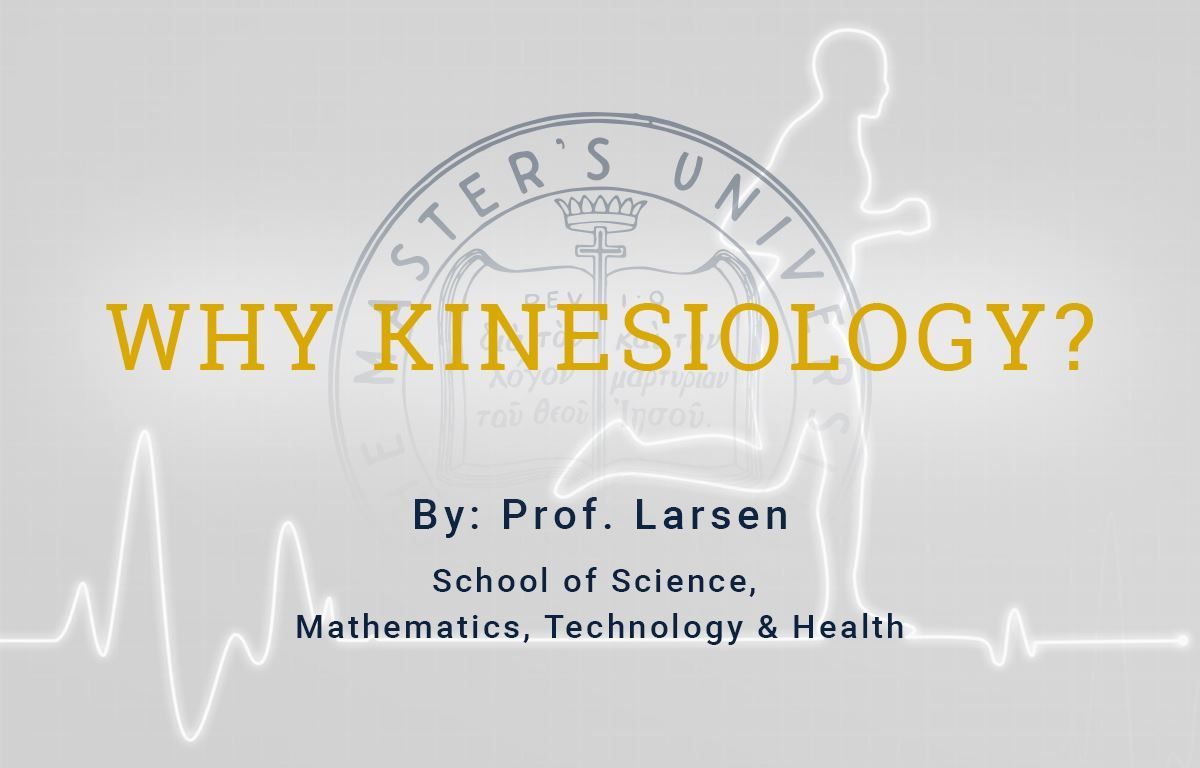
The study of the human body, specifically the movement capabilities God intricately designed and sustains (Ps 139:14; Col 1:16-17; Heb 1:3), defines the major we call Kinesiology.
Kinesiology is a broad discipline that encompasses careers such as health sciences, health promotion, biomechanics, adaptive physical education, physical education/pedagogy and many other occupations that focus on the body.
At TMU we have three areas of study/emphases: Pre-Physical Therapy, Exercise and Sport Science, and Teaching/Coaching. The foundations of our curriculum are anatomy and physiology. A thorough understanding of anatomy is the basis of kinesiological evaluation and assessment whereas a strong foundation in physiology is the basis of injury classification, treatment, and rehabilitation. Simply put, you must have a thorough understanding of the parts in order to identify the problem; in order to correct the problem, you must understand how the parts function.
Over the past decade, much attention in the world of Kinesiology has been given to answering the question: what does proper function look like?
Functional screenings, functional training, and functional rehabilitation models have been postulated by well-renowned authors such as Gray Cook, Mike Boyle, and Gary Gray. Their research has focused specifically on the purpose of each joint and the implications for evaluation, training, and rehabilitation. Ironically, by understanding specific purposes of joints, we have a more complete and integrated understanding of correct movement patterns as well as movement dysfunction. The authors identify the purposes of each joint as follows: ankle-mobility, knee-stability, hip-mobility, lumbar spine-stability, thoracic spine-mobility, etc. Through a proper understanding of what each joint is designed to do, a functional kinesiological approach explains how each joint affects other joints. For example, if the hip (designed for mobility) lacks mobility, the lumbar spine (designed for stability) will have to go through more range of motion than it was designed to tolerate during a specified movement. This can result in low back pain: one of the most common orthopedic ailments. An in-depth analysis not only reveals how adjacent joints affect each other but also how joints that are not adjacent can affect each other (eg. hip dysfunction can result in shoulder dysfunction).
In Kinesiology at TMU we use a “hands on” approach to thoroughly investigate functional movement concepts like these and many others. However, our instruction would be incomplete if we ignored the Bible’s frequent textual references regarding the body. For example, in Romans 12 and I Corinthians 12 Paul exhorts the church toward unity for the sake of the Gospel. He reminds his audience that each part of the body is distinct in purpose and function, but all parts must work together to advance the Kingdom. Conversely, grumbling or complaining from one member causes dysfunction in the body of Christ collectively. Through the study of Kinesiology, we learn not only the intricate details of God’s masterpiece in creation but also how His creation is designed to function for His glory.
Rather, speaking the truth in love, we are to grow up in every way into Him who is the head, into Christ, from whom the whole body, joined and held together by every joint with which it is equipped, when each part is working properly, makes the body grow so that it builds itself up in love. (Ephesians 4:15-16)

The Master’s University and Seminary admit students of any race, color, national and ethnic origin to all the rights, privileges, programs, and activities generally accorded or made available to students at the school. It does not discriminate on the basis of race, color, national and ethnic origin in the administration of its educational policies, admissions policies, scholarship and loan programs, and athletic and other school-administered programs.
21726 Placerita Canyon Road
Santa Clarita, CA 91321
1-800-568-6248
© 2024 The Master’s University Privacy Policy Copyright Info
| Cookie | Duration | Description |
|---|---|---|
| cookielawinfo-checkbox-analytics | 11 months | This cookie is set by GDPR Cookie Consent plugin. The cookie is used to store the user consent for the cookies in the category "Analytics". |
| cookielawinfo-checkbox-functional | 11 months | The cookie is set by GDPR cookie consent to record the user consent for the cookies in the category "Functional". |
| cookielawinfo-checkbox-necessary | 11 months | This cookie is set by GDPR Cookie Consent plugin. The cookies is used to store the user consent for the cookies in the category "Necessary". |
| cookielawinfo-checkbox-others | 11 months | This cookie is set by GDPR Cookie Consent plugin. The cookie is used to store the user consent for the cookies in the category "Other. |
| cookielawinfo-checkbox-performance | 11 months | This cookie is set by GDPR Cookie Consent plugin. The cookie is used to store the user consent for the cookies in the category "Performance". |
| viewed_cookie_policy | 11 months | The cookie is set by the GDPR Cookie Consent plugin and is used to store whether or not user has consented to the use of cookies. It does not store any personal data. |